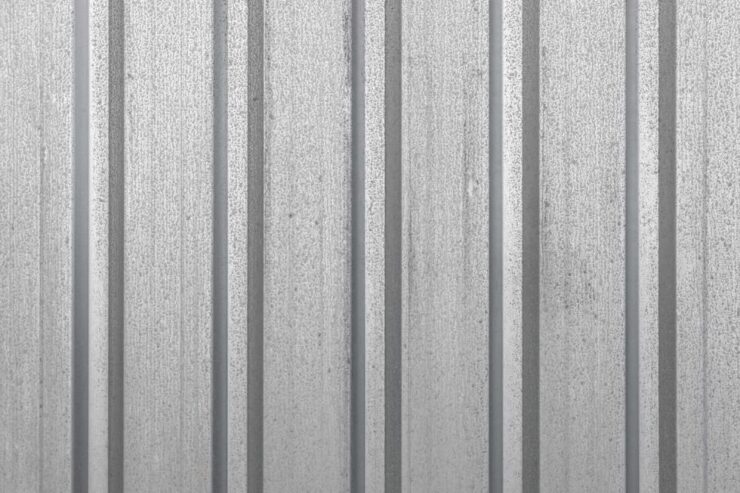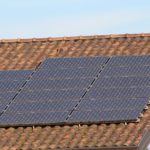What is corrosion and what are the ways to protect against corrosion? Everyone knows what corrosion looks like. This is a natural process that can be observed on the car body or other objects made of metals. However, why is this happening. What causes sheet metal and other metals to rust. We invite you for a handful of information on this subject in this article.
What is corrosion anyway?
Corrosion is a process that contributes to the destruction of metals and other alloys under the influence of environmental factors. There are chemical and electrochemical corrosion, as well as microbiological and physical corrosion. In the first case, damage to the surface of the object occurs as a result of the direct reaction of the metal with gas, i.e. oxygen contained in the air, but without the participation of water. However, water is needed to produce electrochemical corrosion. Therefore, it poses the greatest threat to objects that are outside, i.e. elements of the property.
- https://napinany.pl/zastosowania-czujnikow-mikrofalowych/
- https://www.czasopismabranzowe.pl/witamina-d-dla-noworodka-jaka-najlepsza/
- https://www.sztamka.pl/jak-dlugo-powinno-sie-robic-wino/
In turn, microbial corrosion occurs under the influence of microorganisms, mainly bacteria and fungi, as well as metabolic products. The last of these, i.e. physical corrosion, occurs as a result of the processes of leaching, abrasion and erosion of concrete. Here changes occur extremely quickly.
What factors have an adverse effect on metals?
Metal is exposed to many factors that can trigger the corrosion process. One of them is water. Remember that metal left in water will rust very quickly. Shipwrecks are a perfect example of this fact. What’s more, the variability of temperature combined with humidity is also the first step to seeing an ugly, red coating on the surface of a particular object. Another negative factor is salt. This is because it has corrosive properties.
What are the ways to protect against corrosion?
For protection against corrosion, the so-called electrochemical method is used. It consists in changing the electrode potential at the metal-environment boundary. As a result, this contributes to the inhibition or reduction of the metal dissolution efficiency. Taking into account the direction of potential shift, electrochemical protection methods are differentiated into cathodic and anodic. In the first case, the metal protected object acts as the so-called cathode. The electrode potential of this material moves towards negative values. This is necessary to obtain a result that is lower than the corrosion potential in a particular environment.
Such protection can be performed in two ways, namely sacrificial or electrolytic. With the sacrificial protection of steel, magnesium, zinc, aluminum and other alloys can be used as protectors. In the case of copper, however, such protection is guaranteed by unalloyed steel. On the other hand, in anode protection, the protected object is an anode. The potential is set here in such a way as to reach the passivation level of the object. In this case, protection can also be provided as galvanic or electrolytic.
Remember that exposed metal is more sensitive to external activity. Therefore, one of the methods is to cover the surface with other materials. For this purpose, varnishes or inhibitors are mainly used. These preparations create an effective protective layer that increases resistance to harmful external factors. Another method is to apply paints to the surface. This is due to the fact that they contain oil substances that perform a preservative function. It is worth noting that this is not only an effective way, but also cheap.
Another solution is the selection of appropriate materials that are quite resistant to corrosion. In this case, no protective measures are required. Iron is one of the metals with a fairly high resistance to corrosion in natural environments. The corrosion rate of this metal in acids depends primarily on their concentration and temperature.
In addition, pure copper is also resistant to rust, provided that it does not contain sulfur compounds. Aluminum is also worth mentioning. It is resistant to the activity of the atmosphere, sea and fresh water, as well as the vast majority of neutral solutions and many organic acids. Titanium, on the other hand, is superior to iron, aluminum and copper alloys in terms of rust resistance.
What corrodes faster galvanized sheet or steel sheet?
Much faster corrosion will appear on the steel surface. This is because iron has a much lower potential than nickel. A cell is formed in which the iron is gradually dissolved. However, coating a specific element with zinc effectively prevents this process. Such a protective layer provides a good mechanical barrier against corrosive environmental factors. Zinc is a metal that is distinguished by a lower electrochemical potential than iron.
The zinc layer and the potential difference cause that when the tightness is lost or the zinc coating is damaged, the specific object is still sacrificially protected against corrosion. The electrochemical dissolution of zinc is much slower than that of iron. Therefore, a properly applied zinc coating in standard conditions should provide protection against corrosion for about several dozen years.








